Background:
In a previous post, I discussed installing a prototype Mabotech turbocharger to facilitate the development of an intake I have been working on.
The prototype utilizes a ported shroud housing, a design that helps mitigate compressor surge and allows for greater airflow if the inlet to the compressor inducer becomes choked.
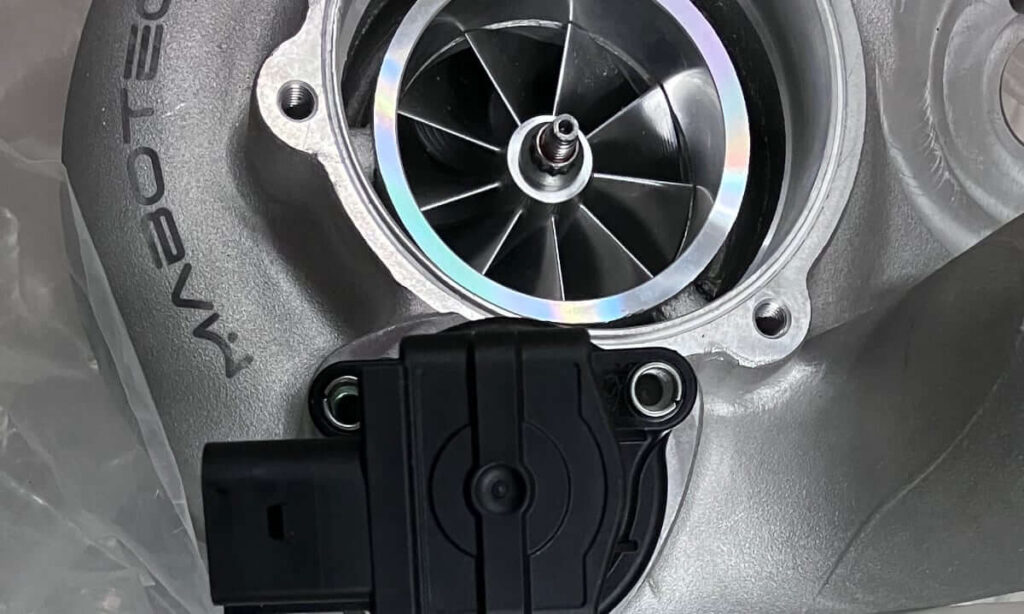
While discussing the M720 with Mabotech, they indicated that, generally, surge should not be an issue for this turbocharger. This left increased airflow as the benefit of the ported shroud – except with the GTI, I did not expect to reach the power level that this turbo ‘might’ have difficulty supplying air for.
The M720 label indicates that the turbo is capable of reaching approximately 720 HP and operating at boost pressures exceeding 40 psi. With no tangible use for the ported shroud at the boost and power level I expected to operate, I considered if doing away with the ported shroud might be beneficial for my use.
This led to testing an insert for the compressor inlet that would bypass the shroud.

The results from the flow test with the compressor insert were promising, showing a 30% increase in airflow at the test pressure of 28″ of H2O.

A second insert was made with a material suitable for the higher temperature found in the engine compartment to conduct tests on the GTI.
Test Procedure:
The baseline results were presented in the previous discussion about the first drive.
The test process is the same as without the insert. Driving the car to an area suitable for making a single-gear, full-throttle, fourth-gear pull. The GTI is accelerated from approximately 2,000 RPM to approximately 6,500 RPM.

Test Results:
In the following charts, the red line represents data with the insert installed, and the orange line is the baseline data where the insert is not used. In the legend, M720I corresponds with using the insert, and M720, without the letter ‘I’, is for the data without the insert.
The outside air temperature during each test was similar, differing by 2 degrees Fahrenheit.

The intake air temperature is also very similar for each test case.
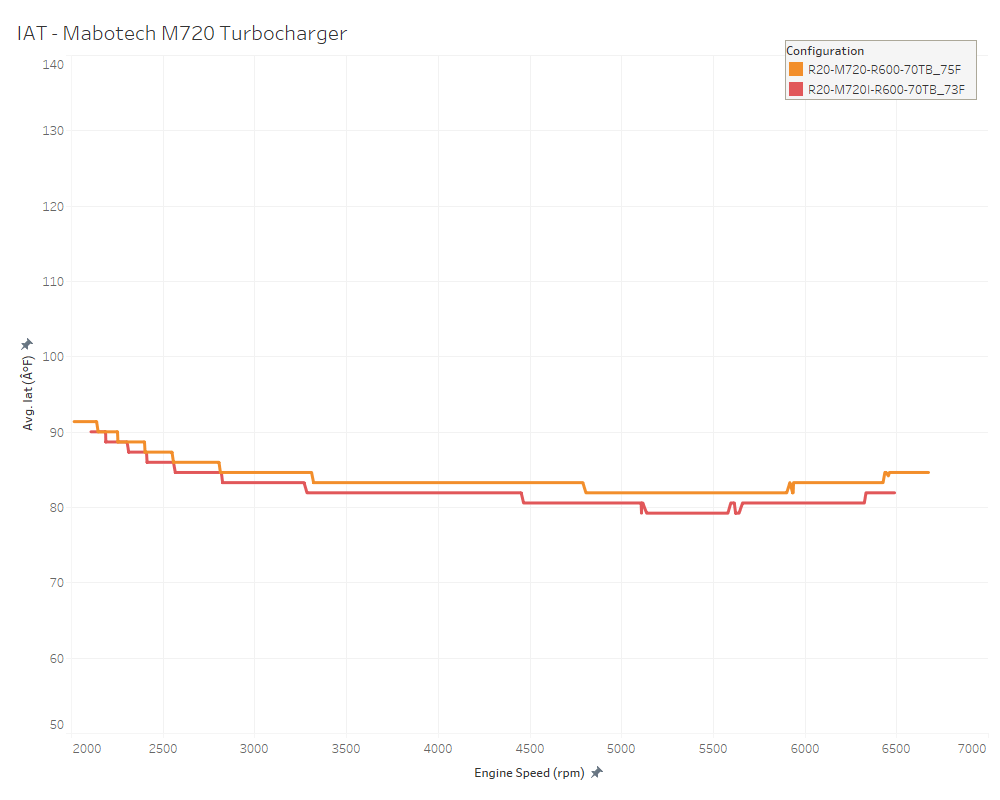
With the insert installed, boost pressure rises slightly faster and reaches a higher pressure.
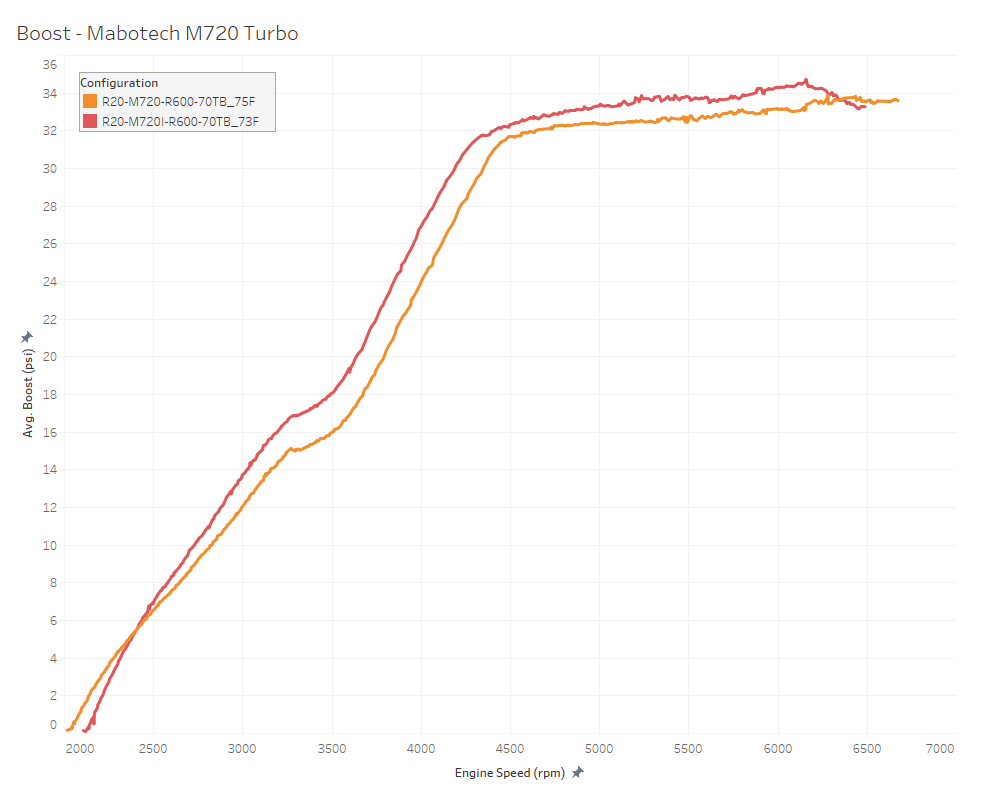
The addition of the insert corresponds to a significant decrease in the turbocharger wastegate duty cycle, which is an indicator of the amount of work the turbine performs to support boost generation.
The reduction of WGDC indicates that the insert is reducing pressure losses before the compressor wheel.
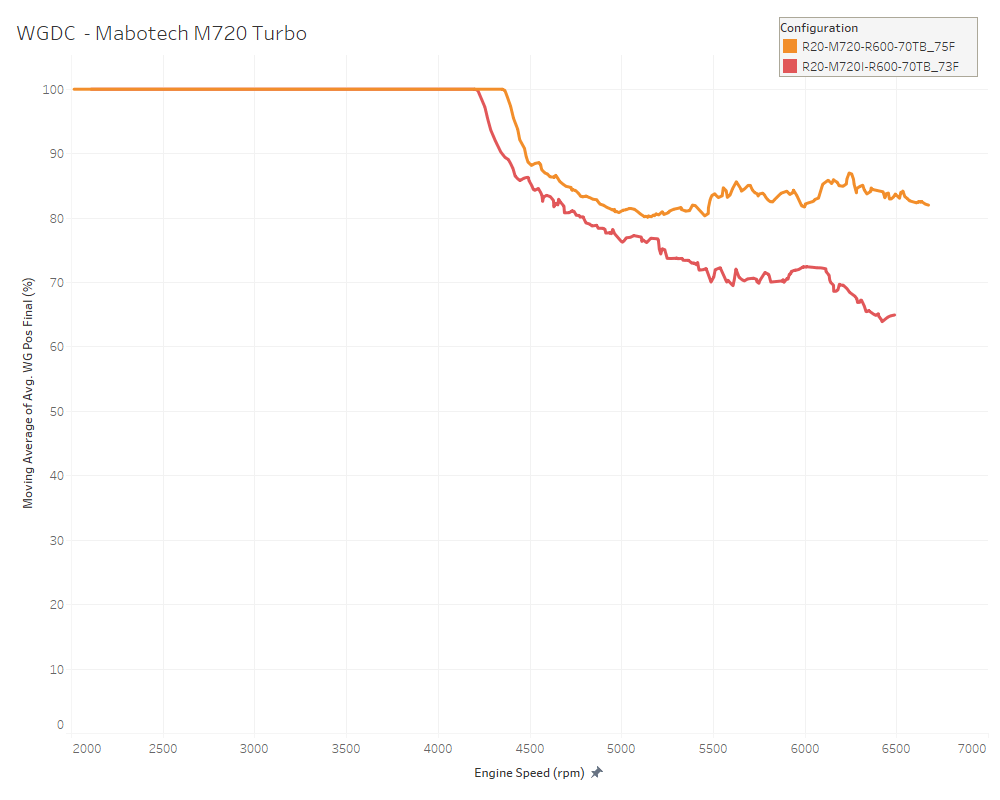
The GTI accelerates slightly faster with the insert, which is logical given the higher boost pressure and lower wastegate duty cycle associated with using the insert.
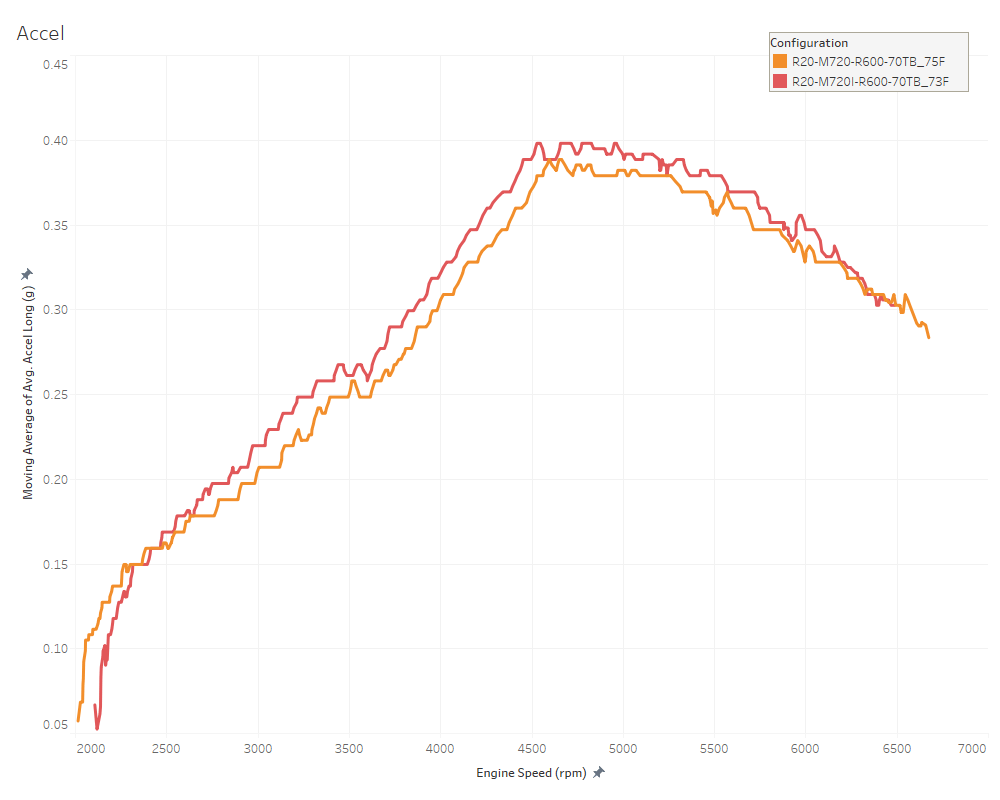
In line with other measures, the fuel flow rate and calculated air flow are slightly higher with the insert installed.
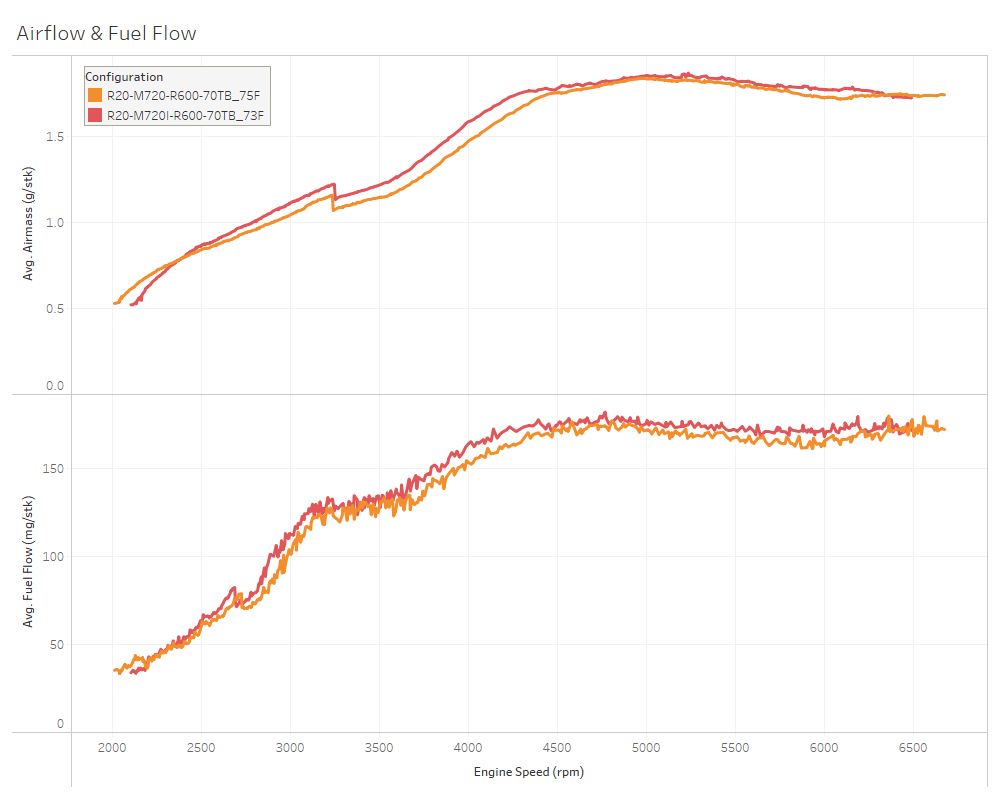
Conclusions:
A compressor inlet insert was designed to bypass the ported shroud of a Mabotech M720 turbocharger. The insert was installed on the M720 and operated on the street to log engine and vehicle data that was compared with baseline data logged without the insert.
The addition of the insert corresponds with a reduction of the turbocharger wastegate duty cycle and a slight increase in boost pressure onset and steady-state pressure level.
The GTI acceleration rate increased slightly with the addition of the compressor insert.
Next:
Comparing the M720 results with insert versus the M520, when operating with the same M520 ECU tune, will be discussed next.
